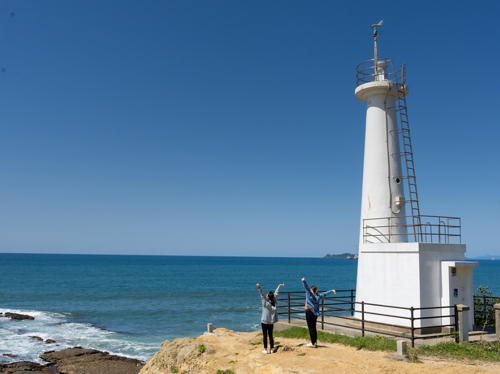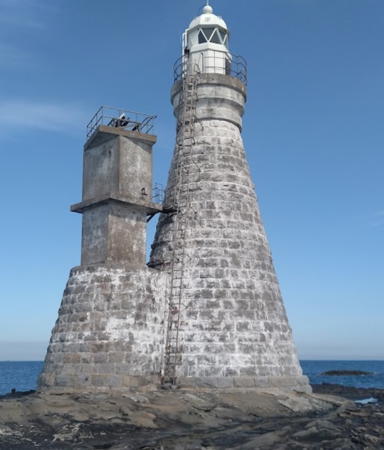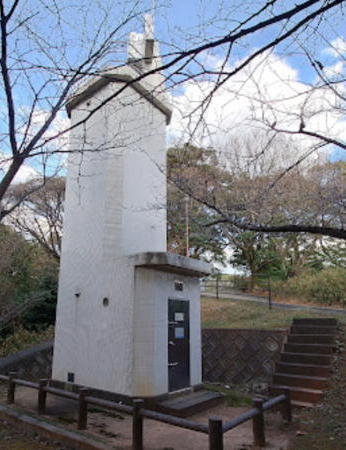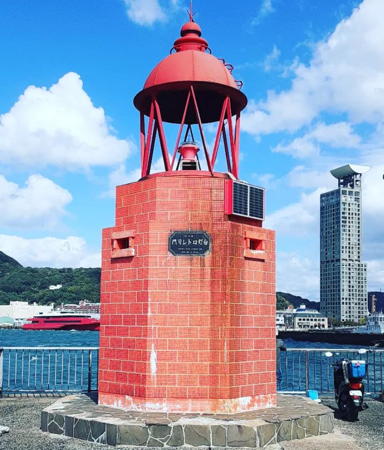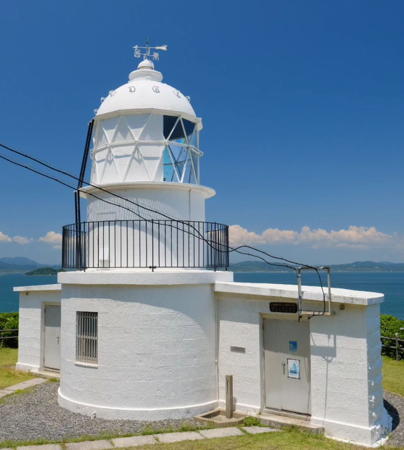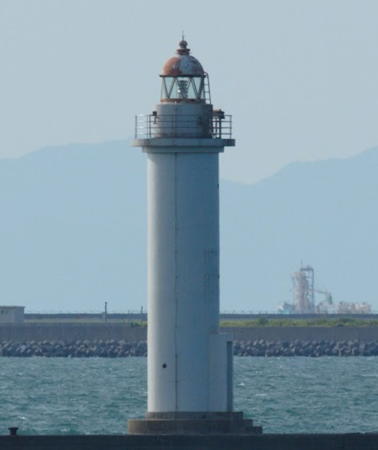The nation of Japan, known in Japanese as Nihon or Nippon (日本), occupies an archipelago off the east coast of Asia. The four main islands are Hokkaidō in the north, Honshū (the largest), Shikoku in the south, and Kyūshū in the southwest. The country includes thousands of other islands of all sizes; among them the Ryūkyū (Nansei) Islands are a long chain extending to the southwest and including the large island of Okinawa, and the Nanpō Islands are another long chain extending south into the Pacific Ocean. Much of Japan is mountainous but the coastal regions are densely populated and urbanized; the country's population is about 126 million.
Japan is divided into 47 prefectures. Located at the southwestern end of the Japanese archipelago, Kyūshū is divided into seven prefectures. This page includes lighthouses of Fukuoka Prefecture on the northern coast of the island. Western Fukuoka faces northwest on the Tsushima Strait and the Sea of Japan while Eastern Fukuoka faces northeast on the Seto Inland Sea, which separates Kyūshū from Honshū and Shikoku. In between the narrow Kanmon Strait connects the Inland Sea and Sea of Japan. This page includes the lighthouses of the Kitakyūshū area facing the Kanmon Strait and Seto Inland Sea; the Fukuoka Area page includes lighthouses in the western portion of the prefecture.
In Japanese the word for a lighthouse is tōdai or toudai (灯台). The words saki and misaki are for capes and headlands, hana ("nose") is a promontory, hantō is a peninsula, shima (also spelled sima or jima) is an island, bae is a reef, iwa or shi is a rocky reef, amase or se is a shoal, wan is a bay, nada is a sound or basin, kaikyō is a strait, kawa is a river, and kō or minato is a harbor.
Lighthouses in Japan are operated and maintained by the Japanese Coast Guard's Maritime Safety Agency. There is at least one Coast Guard Section Office in each prefecture, often two or more. Fukuoka Prefecture has three offices, at Fukuoka, Wakamatsu, and Moji.
Fukuoka Prefecture also has a short southern coastline on Ariake Bay. Lighthouses of the Ariake coast are on the Kumamoto Area page.
A note on the Sea of Japan/East Sea controversy: The Directory takes no side in any international dispute; it makes use of the terminology, names, and spellings as they currently exist in each area covered. The sea between Japan and Korea is called the Sea of Japan on the pages for Japan and the East Sea on the pages for Korea.
ARLHS numbers are from the ARLHS World List of Lights. JCG numbers are the Japanese Coast Guard's light list numbers. Admiralty numbers are from volume M of the Admiralty List of Lights & Fog Signals. U.S. NGA List numbers are from Publication 112.
- General Sources
- Lighthouses in Japan - Fukuoka
- A comprehensive site, although almost entirely in Japanese.
- Form of a Lighthouse - Fukuoka
- Another site with many photos of Japanese lighthouses, cited below as FOAL.
- Lighthouse Visits
- This site has photos for many lighthouses in this area.
- Lighthouse-Japan.com - Fukuoka
- This site has good photos and background information for many of the major lighthouses.
- Our Lighthouses of Fukuoka Prefecture
- A comprehensive collection of photos of lighthouses in Fukuoka.
- Coast of Japan - Cape/Lighthouse Index
- This site has numerous photos of Fukuoka lighthouses. Entirely in Japanese, but lighthouses can be located by their JCG numbers.
- Lighthouses in Fukuoka Prefecture
- Photos by various photographers available from Wikimedia.
- Online List of Lights - Japan
- Photos by various photographers posted by Alexander Trabas. Several Kanmon Strait photos are by Jim Smith.
- Navionics Charts
- Navigation chart for Kitakyūshū.
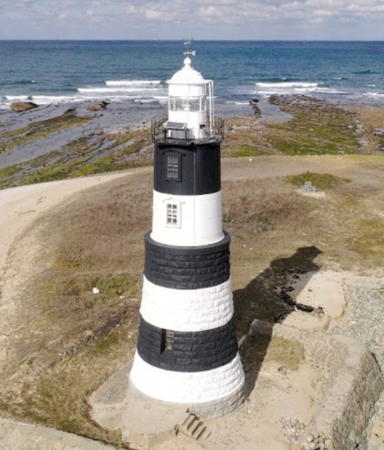
Shira Su Light, Wakamatsu-ku, Kitakyūshū, December 2018
Google Maps drone view by Akahori
